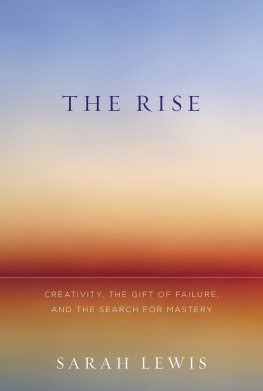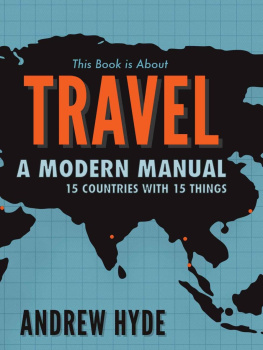Lewis Hyde - The Gift: Creativity and the Artist in the Modern World
Here you can read online Lewis Hyde - The Gift: Creativity and the Artist in the Modern World full text of the book (entire story) in english for free. Download pdf and epub, get meaning, cover and reviews about this ebook. year: 2009, publisher: Knopf Doubleday Publishing Group, genre: Romance novel. Description of the work, (preface) as well as reviews are available. Best literature library LitArk.com created for fans of good reading and offers a wide selection of genres:
Romance novel
Science fiction
Adventure
Detective
Science
History
Home and family
Prose
Art
Politics
Computer
Non-fiction
Religion
Business
Children
Humor
Choose a favorite category and find really read worthwhile books. Enjoy immersion in the world of imagination, feel the emotions of the characters or learn something new for yourself, make an fascinating discovery.
- Book:The Gift: Creativity and the Artist in the Modern World
- Author:
- Publisher:Knopf Doubleday Publishing Group
- Genre:
- Year:2009
- Rating:4 / 5
- Favourites:Add to favourites
- Your mark:
- 80
- 1
- 2
- 3
- 4
- 5
The Gift: Creativity and the Artist in the Modern World : summary, description and annotation
We offer to read an annotation, description, summary or preface (depends on what the author of the book "The Gift: Creativity and the Artist in the Modern World " wrote himself). If you haven't found the necessary information about the book — write in the comments, we will try to find it.
Lewis Hyde: author's other books
Who wrote The Gift: Creativity and the Artist in the Modern World ? Find out the surname, the name of the author of the book and a list of all author's works by series.
The Gift: Creativity and the Artist in the Modern World — read online for free the complete book (whole text) full work
Below is the text of the book, divided by pages. System saving the place of the last page read, allows you to conveniently read the book "The Gift: Creativity and the Artist in the Modern World " online for free, without having to search again every time where you left off. Put a bookmark, and you can go to the page where you finished reading at any time.
Font size:
Interval:
Bookmark:
 LEWIS HYDE The Gift Lewis Hyde was born in Boston and studied at the universities of Minnesota and Iowa. In addition to The Gift , he is the author of Trickster Makes This World , a portrait of the kind of disruptive intelligence all cultures need if they are to remain lively, flexible, and open to change. The editor of On the Poetry of Allen Ginsberg and The Essays of Henry D. Thoreau , Hyde is currently at work on a book about our cultural commons, that vast store of ideas, inventions, and works of art that we have inherited from the past and continue to produce.A MacArthur Fellow and former director of creative writing at Harvard University, Hyde teaches during the fall semesters at Kenyon College, where he is the Richard L. Thomas Professor of Creative Writing. During the rest of the year he lives in Cambridge, Massachusetts, where he is a Fellow at Harvards Berkman Center for Internet and Society. www.lewishyde.com
LEWIS HYDE The Gift Lewis Hyde was born in Boston and studied at the universities of Minnesota and Iowa. In addition to The Gift , he is the author of Trickster Makes This World , a portrait of the kind of disruptive intelligence all cultures need if they are to remain lively, flexible, and open to change. The editor of On the Poetry of Allen Ginsberg and The Essays of Henry D. Thoreau , Hyde is currently at work on a book about our cultural commons, that vast store of ideas, inventions, and works of art that we have inherited from the past and continue to produce.A MacArthur Fellow and former director of creative writing at Harvard University, Hyde teaches during the fall semesters at Kenyon College, where he is the Richard L. Thomas Professor of Creative Writing. During the rest of the year he lives in Cambridge, Massachusetts, where he is a Fellow at Harvards Berkman Center for Internet and Society. www.lewishyde.com
FOR MY PARENTS
What is good is given back.
I.
One Two Three Four Five Six Seven
II.
Eight Nine Ten
Cambridge, Massachusetts
April 2007
of our being which is a gift and not
an acquisitionand, therefore, more permanently enduring.
JOSEPH CONRAD At the corner drugstore my neighbors and I can now buy a line of romantic novels written according to a formula developed through market research. An advertising agency polled a group of women readers. What age should the heroine be? (She should be between nineteen and twenty-seven.) Should the man she meets be married or single? (Recently widowed is best.) The hero and heroine are not allowed in bed together until they are married. Each novel is 192 pages long. Even the name of the series and the design of the cover have been tailored to the demands of the market. (The name Silhouette was preferred over Belladonna, Surrender, Tiffany, and Magnolia; gold curlicues were chosen to frame the cover.) Six new titles appear each month and two hundred thousand copies of each title are printed.Why do we suspect that Silhouette Romances will not be enduring works of art? What is it about a work of art, even when it is bought and sold in the market, that makes us distinguish it from such pure commodities as these?It is the assumption of this book that a work of art is a gift, not a commodity. Or, to state the modern case with more precision, that works of art exist simultaneously in two economies, a market economy and a gift economy. Only one of these is essential, however: a work of art can survive without the market, but where there is no gift there is no art.There are several distinct senses of gift that lie behind these ideas, but common to each of them is the notion that a gift is a thing we do not get by our own efforts. We cannot buy it; we cannot acquire it through an act of will. It is bestowed upon us. Thus we rightly speak of talent as a gift, for although a talent can be perfected through an effort of the will, no effort in the world can cause its initial appearance. Mozart, composing on the harpsichord at the age of four, had a gift.We also rightly speak of intuition or inspiration as a gift. As the artist works, some portion of his creation is bestowed upon him. An idea pops into his head, a tune begins to play, a phrase comes to mind, a color falls in place on the canvas. Usually, in fact, the artist does not find himself engaged or exhilarated by the work, nor does it seem authentic, until this gratuitous element has appeared, so that along with any true creation comes the uncanny sense that I, the artist, did not make the work. Not I, not I, but the wind that blows through me, says D. H. Lawrence. Not all artists emphasize the gift phase of their creations to the degree that Lawrence does, but all artists feel it.These two senses of gift refer only to the creation of the workwhat we might call the inner life of art; but it is my assumption that we should extend this way of speaking to its outer life as well, to the work after it has left its makers hands. That art that matters to uswhich moves the heart, or revives the soul, or delights the senses, or offers courage for living, however we choose to describe the experiencethat work is received by us as a gift is received. Even if we have paid a fee at the door of the museum or concert hall, when we are touched by a work of art something comes to us which has nothing to do with the price. I went to see a landscape painters works, and that evening, walking among pine trees near my home, I could see the shapes and colors I had not seen the day before. The spirit of an artists gifts can wake our own. The work appeals, as Joseph Conrad says, to a part of our being which is itself a gift and not an acquisition. Our sense of harmony can hear the harmonies that Mozart heard. We may not have the power to profess our gifts as the artist does, and yet we come to recognize, and in a sense to receive, the endowments of our being through the agency of his creation. We feel fortunate, even redeemed. The daily commerce of our livessugar for sugar and salt for salt, as the blues singers sayproceeds at its own constant level, but a gift revives the soul. When we are moved by art we are grateful that the artist lived, grateful that he labored in the service of his gifts.If a work of art is the emanation of its makers gift and if it is received by its audience as a gift, then is it, too, a gift? I have framed the question to imply an affirmative answer, but I doubt we can be so categorical. Any object, any item of commerce, becomes one kind of property or another depending on how we use it. Even if a work of art contains the spirit of the artists gift, it does not follow that the work itself is a gift. It is what we make of it.And yet, that said, it must be added that the way we treat a thing can sometimes change its nature. For example, religions often prohibit the sale of sacred objects, the implication being that their sanctity is lost if they are bought and sold. A work of art seems to be a hardier breed; it can be sold in the market and still emerge a work of art. But if it is true that in the essential commerce of art a gift is carried by the work from the artist to his audience, if I am right to say that where there is no gift there is no art, then it may be possible to destroy a work of art by converting it into a pure commodity. Such, at any rate, is my position. I do not maintain that art cannot be bought and sold; I do maintain that the gift portion of the work places a constraint upon our merchandising.The particular form that my elaboration of these ideas has taken may best be introduced through a description of how I came to my topic in the first place. For some years now I myself have tried to make my way as a poet, a translator, and a sort of scholar without institution. Inevitably the money question comes up; labors such as mine are notoriously non-remunerative, and the landlord is not interested in your book of translations the day the rent falls due. A necessary corollary seems to follow the proposition that a work of art is a gift: there is nothing in the labor of art itself that will automatically make it pay. Quite the opposite, in fact. I develop this point at some length in the chapters that follow, so I shall not elaborate upon it here except to say that every modern artist who has chosen to labor with a gift must sooner or later wonder how he or she is to survive in a society dominated by market exchange. And if the fruits of a gift are gifts themselves, how is the artist to nourish himself, spiritually as well as materially, in an age whose values are market values and whose commerce consists almost exclusively in the purchase and sale of commodities?Every culture offers its citizens an image of what it is to be a man or woman of substance. There have been times and places in which a person came into his or her social being through the dispersal of his gifts, the big man or big woman being that one through whom the most gifts flowed. The mythology of a market society reverses the picture: getting rather than giving is the mark of a substantial person, and the hero is self-possessed, self-made. So long as these assumptions rule, a disquieting sense of triviality, of worthlessness even, will nag the man or woman who labors in the service of a gift and whose products are not adequately described as commodities. Where we reckon our substance by our acquisitions, the gifts of the gifted man are powerless to make him substantial.Moreover, as I shall argue in my opening chapters, a gift that cannot be given away ceases to be a gift. The spirit of a gift is kept alive by its constant donation. If this is the case, then the gifts of the inner world must be accepted as gifts in the outer world if they are to retain their vitality. Where gifts have no public currency, therefore, where the gift as a form of property is neither recognized nor honored, our inner gifts will find themselves excluded from the very commerce which is their nourishment. Or, to say the same thing from a different angle, where commerce is exclusively a traffic in merchandise, the gifted cannot enter into the give-and-take that ensures the livelihood of their spirit. These two lines of thoughtthe idea of art as a gift and the problem of the marketdid not converge for me until I began to read through the work that has been done in anthropology on gifts as a kind of property and gift exchange as a kind of commerce. Many tribal groups circulate a large portion of their material wealth as gifts. Tribesmen are typically enjoined from buying and selling food, for example; even though there may be a strong sense of mine and thine, food is always given as a gift and the transaction is governed by the ethics of gift exchange, not those of barter or cash purchase. Not surprisingly, people live differently who treat a portion of their wealth as a gift. To begin with, unlike the sale of a commodity, the giving of a gift tends to establish a relationship between the parties involved. Furthermore, when gifts circulate within a group, their commerce leaves a series of interconnected relationships in its wake, and a kind of decentralized cohesiveness emerges. There are, as we shall see, five or six related observations of this kind that can be made about a commerce of gifts, and in reading through the anthropological literature I began to realize that a description of gift exchange might offer me the language, the way of speaking, through which I could address the situation of creative artists. And since anthropology tends not to concern itself so much with inner gifts, I soon widened my reading to include all the folk tales I could find involving gifts. Folk wisdom does not differ markedly from tribal wisdom in its sense of what a gift is and does, but folk tales are told in a more interior language: the gifts in fairy tales may, at one level, refer to real property, but at another they are images in the psyche and their story describes for us a spiritual or psychological commerce. In fact, although I offer many accounts of gift exchange in the real world, my hope is that these accounts, too, can be read at several levels, that the real commerce they tell about stands witness to the invisible commerce through which the gifted come to profess their gifts, and we to receive them.The classic work on gift exchange is Marcel Mausss Essai sur le don, published in France in 1924. The nephew of mile Durkheim, a Sanskrit scholar, a gifted linguist, and a historian of religions, Mauss belongs to that group of early sociologists whose work is firmly rooted in philosophy and history. His essay begins with the field reports of turn-of-the-century ethnographers (Franz Boas, Bronislaw Malinowski, and Elsdon Best, in particular), but goes on to cover the Roman laws of real estate, a Hindu epic, Germanic dowry customs, and much more. The essay has proved to hold several enduring insights. Mauss noticed, for one thing, that gift economies tend to be marked by three related obligations: the obligation to give, the obligation to accept, and the obligation to reciprocate. He also pointed out that we should understand gift exchange to be a total social phenomenonone whose transactions are at once economic, juridical, moral, aesthetic, religious, and mythological, and whose meaning cannot, therefore, be adequately described from the point of view of any single discipline.Almost every anthropologist who has addressed himself to questions of exchange in the last half century has taken Mausss essay as his point of departure. Many names come to mind, including Raymond Firth and Claude Lvi-Strauss, but in my estimation the most interesting recent work has been done by Marshall Sahlins, an economic anthropologist at the University of Chicago. Sahlinss 1972 Stone Age Economics , in particular, contains an excellent chapter on The Spirit of the Gift, which applies a rigorous explication de texte to part of the source material upon which Mauss based his essay, and goes on to place Mausss ideas in the history of political philosophy. It was through Sahlinss writings that I first began to see the possibility of my own work, and I am much indebted to him.The primary work on gift exchange has been done in anthropology not, it seems to me, because gifts are a primitive or aboriginal form of propertythey arentbut because gift exchange tends to be an economy of small groups, of extended families, small villages, close-knit communities, brotherhoods and, of course, of tribes. During the last decade a second discipline has turned to the study of gifts, and for a second reason. Medical sociologists have been drawn to questions of gift exchange because they have come to understand that the ethics of gift giving make it a form of commerce appropriate to the transfer of what we might call sacred properties, in this case parts of the human body. The earliest work in this field was done by Richard Titmuss, a British professor of social administration, who, in 1971, published The Gift Relationship , a study of how we handle the human blood that is to be used for transfusions. Titmuss compares the British system, which classifies all blood as a gift, with the American, a mixed economy in which some blood is donated and some is bought and sold. Since Titmusss work appeared, our increasing ability to transplant actual body organs, kidneys in particular, has led to several books on the ethics and complexities of the gift of life. Even such a brief prcis of the work that has been done on gift exchange should make it clear that we still lack a comprehensive theory of gifts. Mausss work remains our only general statement, and even that, as its title tells us, is an essay, a collection of initial observations with proposals for further study. Most of the work since Mauss has concerned itself with specific topicsin anthropology, law, ethics, medicine, public policy, and so forth. My own work is no exception. The first half of this book is a theory of gift exchange and the second is an attempt to apply the language of that theory to the life of the artist. Clearly, the concerns of the second half were the guide to my reading and theorizing in the first. I touch on many issues, but I pass over many others in silence. With two or three brief exceptions I do not, for example, take up the negative side of gift exchangegifts that leave an oppressive sense of obligation, gifts that manipulate or humiliate, gifts that establish and maintain hierarchies, and so forth and so on. This is partly a matter of priority (it has seemed to me that a description of the value and power of gifts must precede an explication of their misuse), but it is mostly a matter of my subject. I have hoped to write an economy of the creative spirit: to speak of the inner gift that we accept as the object of our labor, and the outer gift that has become a vehicle of culture. I am not concerned with gifts given in spite or fear, nor those gifts we accept out of servility or obligation; my concern is the gift we long for, the gift that, when it comes, speaks commandingly to the soul and irresistibly moves us. It is this element of relationship which leads me to speak of gift exchange as an erotic commerce, opposing eros (the principle of attraction, union, involvement which binds together) to logos (reason and logic in general, the principle of differentiation in particular). A market economy is an emanation of logos. There are two authors whose work I would recommend as tonic to the optimistic cast that this omission sometimes lends my work: Millard Schumaker, who has written an excellent series of essays on the problem of gifts and obligation, and Garrett Hardin, whose 1968 essay in Science , The Tragedy of the Commons, has been followed in recent years by a thoughtful discussion of the limits of altruism. The works of both of these men are listed in the bibliography.
Font size:
Interval:
Bookmark:
Similar books «The Gift: Creativity and the Artist in the Modern World »
Look at similar books to The Gift: Creativity and the Artist in the Modern World . We have selected literature similar in name and meaning in the hope of providing readers with more options to find new, interesting, not yet read works.
Discussion, reviews of the book The Gift: Creativity and the Artist in the Modern World and just readers' own opinions. Leave your comments, write what you think about the work, its meaning or the main characters. Specify what exactly you liked and what you didn't like, and why you think so.

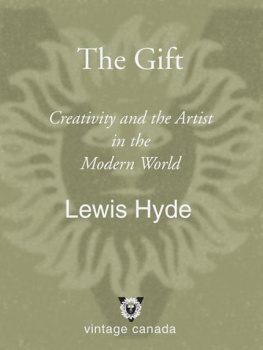
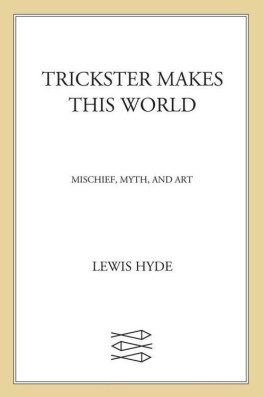
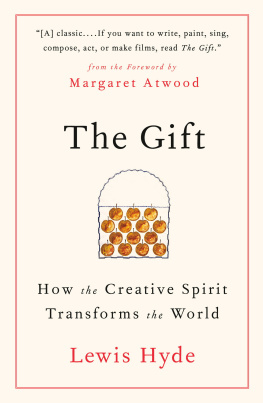
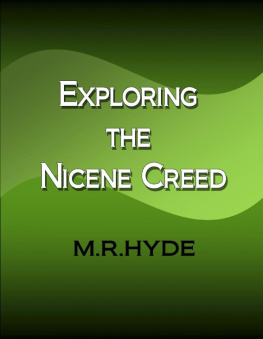
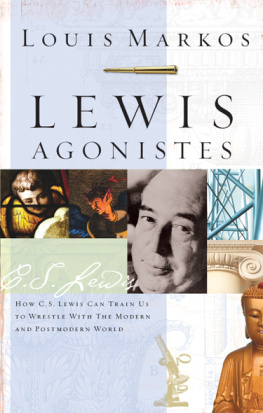
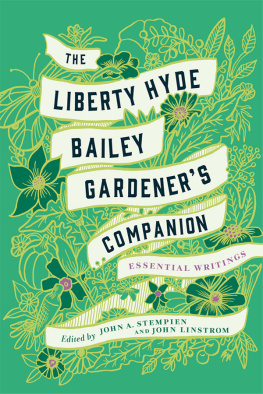
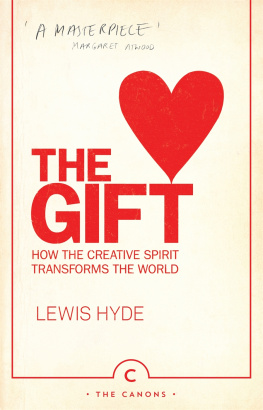



![Beverly M Lewis] - The Beverly Lewis Amish Heritage Cookbook](/uploads/posts/book/96304/thumbs/beverly-m-lewis-the-beverly-lewis-amish-heritage.jpg)
